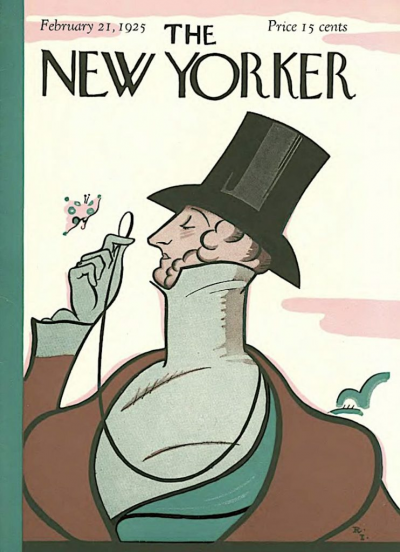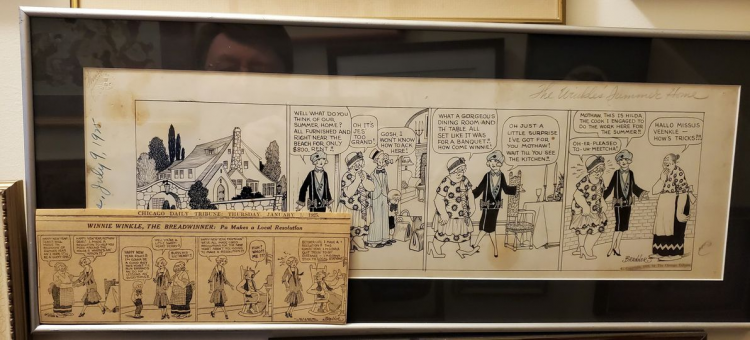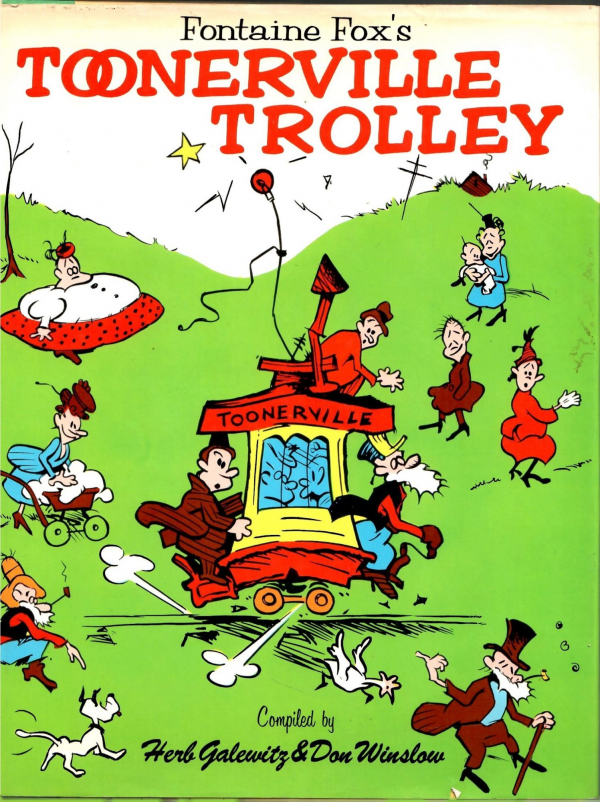Toons & Tunes on Wayback Wednesday
Skip to commentsFrom 100 years ago is an article on the then-current comics scene from the February 1923 Vanity Fair.


THE largest group, dealing with married life, reaches its lowest level of painfulness in the series “For Better For Worse”, by Tad, and perhaps its highest level in Briggs’ series “Mr. and Mrs”. It includes such varied phases as “Bringing Up Father”, by George MacManus, “The Gumps”, “Let the Wedding Bells Ring Out”, and dozens of minor ones. In the Briggs comic it seems that the people are really fond of each other, though they always quarrel, and practically all of them end with the two not speaking to each other. In Tad’s pictures, on the other hand, it is difficult to discover any emotion in his married couple but hatred; there is so much bitterness and so little fun in all his work that it hardly crosses the line that divides the tragic from the comic.
The Katzenjammer KIds, Happy Hooligan, Boob McNutt, and Mutt and Jeff are among the popular comics mentioned in this Vanity Fair article about tragedy portrayed as humor in the funny pages.
Two years after that Vanity Fair issue saw the debut of a new magazine that would revolutionize magazine cartoons.


As they do The New Yorker paid tribute to the initial 1925 Rea Irwin cover earlier this month. But we won’t be going back 98 years, rather just a day or two to the 98th anniversary bash The New Yorker threw with photos of the current crop of cartoonists courtesy of cartoonist Michael Maslin’s Ink Spill and cartoonist Liza Donnelly.
Continuing in the Now and Then theme…
James Gauthier, at the always entertaining and educational Hogan’s Alley Magazine Facebook page, took a 98 year old tearsheet of the January 1, 1925 Winnie Winkle comic strip (which spread out over 5 of 8 Chicago Tribune columns) and compared it to a broadsheet comics page of 2023.


Joining the Hogan’s Alley Magazine Facebook page is a highly recommended action.
James would later compare the tearsheet to the original art of a 1926 Winnie Winkle daily comic strip.

Moving to the next decade, Drew Bradley and Multiversity Comics are up to 1933 in their history of comic books.

… in this setting Wildenberg and his sales manager, Maxwell Charles Gaines, assembled the first modern comic book. Because both men still thought of comics only as a bonus that would attract buyers to another product, Gaines focused on finding an interested corporate buyer and talked Proctor & Gamble into buying 10,000 copies. Meanwhile, Wildenberg secured reprint rights to the most popular strips at $10 per page (equivalent to $225 in 2023). P&G offered the 36-page, 7½”x10” “Funnies on Parade” as a mail-in rebate on its soap products in spring 1933 and sold out within weeks.
Michael Taube sez:
Last month, I purchased a copy of Fontaine Fox’s Toonerville Trolley (1972). Compiled by literary agent Herb Galewitz and illustrator Don Winslow, it was the first proper collection of Fox’s legendary comic strip Toonerville Folks, which ran from 1908 to 1955.
This compilation is an exceptional volume of work.


Michael Taube, for Troy Media, sifts through the various claims of inspiration for the Fontaine Fox classic comic.
There’s some dispute among comic historians as to its origins. “Various localities vied to lay claim to the ‘original’ Toonerville trolley,” Bill Blackbeard wrote in Maurice Horn’s The World Encyclopedia of Comics (1976), “and for decades every trolley line laid to rest across the country was called a ‘Toonerville’ by local news writers.”
There’s also Martin Sheridan’s analysis in Comics and their Creators (1944). He suggested the Brook Street trolley line in Louisville, which “used to furnish indifferent service at best,” left Fox and the Herald’s managing editor, A.T. McDonald, “equally disgusted.”
A July 30, 1937, New York Times article gives credence to the Pelham connection. “Back in 1909, when Mr. Fox took a ride on the Pelham line, then served by a rickety little car,” it noted, “he watched the ‘skipper’ gossip with the passengers and stop the car to pick apples for them; thus he drew his inspiration for his Toonerville Trolley comics.”
Other historians view it differently. “His subjects were local,” Colton Waugh wrote in The Comics (1947), and he “never lost that local flavour.” Nevertheless, “Toonerville is not particularly Kentucky, and there you have a great strip success recipe: something local, that can be true everywhere.”
And then there were claims of inspiring the creation of characters populating the strip.
Vincent Alexander, at Cartoon Brew celebrates the 86th anniversary of Raymond Scott’s Powerhouse, “the most iconic song in cartoon history.”
On February 20, 1937, Raymond Scott first recorded a tune called “Powerhouse.” You may not know it by name, but you’ll recognize the melody, which has been used in cartoons for 80 years. It was used by composer Carl Stalling in over 40 of the original Warner Bros. shorts, and it has become an iconic staple of animated films ever since.
The song is best remembered as the “assembly line” theme that has underscored countless animated films…
hat tip to Brian Fies for the YouTube find


Comments 3
Comments are closed.